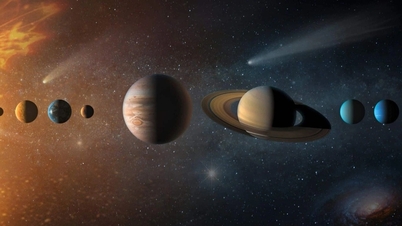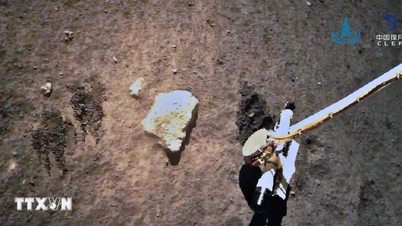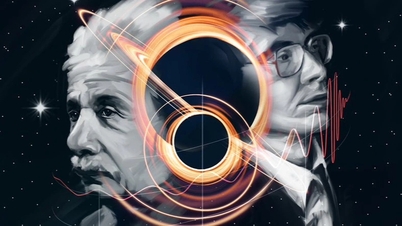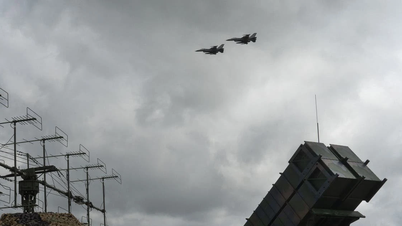In a historic observation, scientists have recorded the first clear radio image of two supermassive black holes orbiting each other inside a distant quasar called OJ 287.
The image, published by an international team of researchers in the Astrophysical Journal, shows a pair of supermassive black holes “locked in a cosmic dance,” located in the quasar OJ 287, about 5 billion light-years from Earth in the constellation Cancer.
Quasars are regions at the centers of galaxies where extreme conditions around supermassive black holes cause gas and dust to heat up and glow brightly.
The discovery provides the clearest evidence yet that binary black hole systems – two objects with extremely strong gravitational pulls bound together – do exist, researchers say.
“The quasar OJ 287 is so bright that even amateur astronomers can observe it with their personal telescopes,” said Professor Mauri Valtonen of the University of Turku (Finland), lead author of the study.
Previously, astronomers had only captured individual images of a few black holes, such as those at the center of the Milky Way and the Messier 87 galaxy. This is the first time two black holes have been directly observed orbiting each other.
Although previous gravitational wave detections have suggested the existence of black hole binaries, the OJ 287 system has never been observed visually due to the resolution limitations of existing telescopes.
The breakthrough was achieved by combining radio data from Earth-based telescopes with the RadioAstron (Spektr-R) satellite, which orbits at 50% the distance from Earth to the Moon, providing a resolution about 100,000 times higher than conventional optical images.
“When we compared the new radio image with previous theoretical simulations, the two black holes appeared exactly where they were predicted,” said Valtonen. “The black holes themselves are completely black, but can be detected by the jets of high-energy particles or glowing gas surrounding them.”
The images also show the jet from the smaller black hole bending like a jet of water from a rotating nozzle, due to its rapid rotation around the larger black hole.
The team predicts that this jet of matter will oscillate back and forth like a “cosmic tail,” as the small black hole continues to rotate in its 12-year orbit, opening up a rare opportunity to observe this movement in real time./.
Source: https://www.vietnamplus.vn/lan-dau-tien-phat-hien-hinh-anh-hai-ho-den-sieu-khoi-luong-quay-quanh-nhau-post1069994.vnp


![[Photo] Solemn opening of the 1st Government Party Congress](https://vphoto.vietnam.vn/thumb/1200x675/vietnam/resource/IMAGE/2025/10/13/1760337945186_ndo_br_img-0787-jpg.webp)













![[INFOGRAPHIC] Birds follow storms to find food](https://vphoto.vietnam.vn/thumb/402x226/vietnam/resource/IMAGE/2025/10/13/1760345532978_thumb-chim-hai-au-jpg.webp)


















![[Photo] General Secretary To Lam attends the opening of the 1st Government Party Congress](https://vphoto.vietnam.vn/thumb/1200x675/vietnam/resource/IMAGE/2025/10/13/1760321055249_ndo_br_cover-9284-jpg.webp)








































































Comment (0)